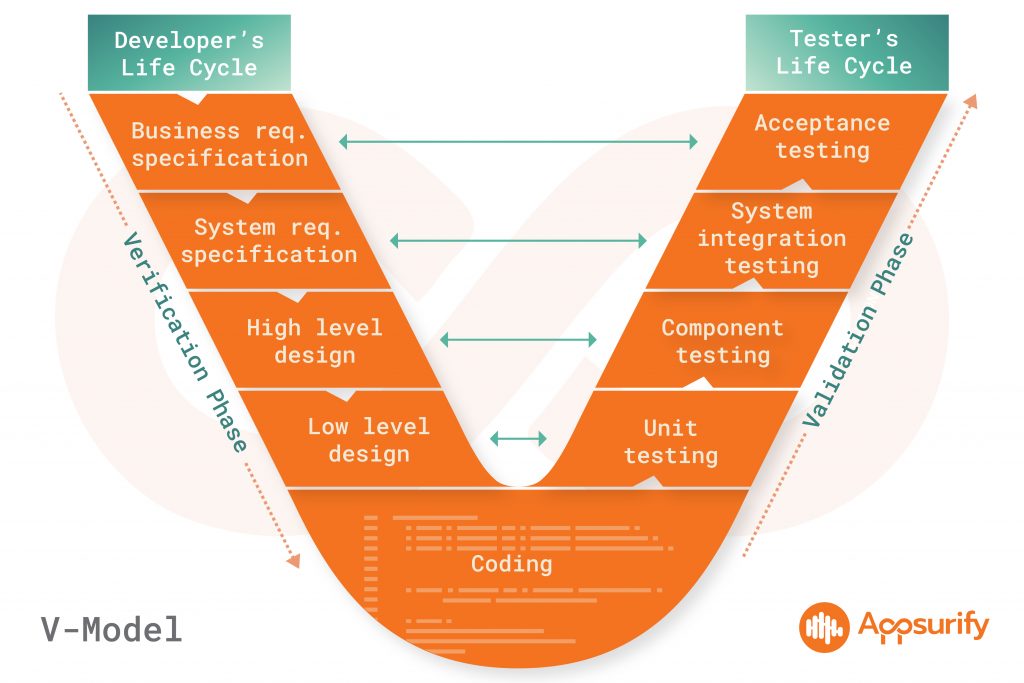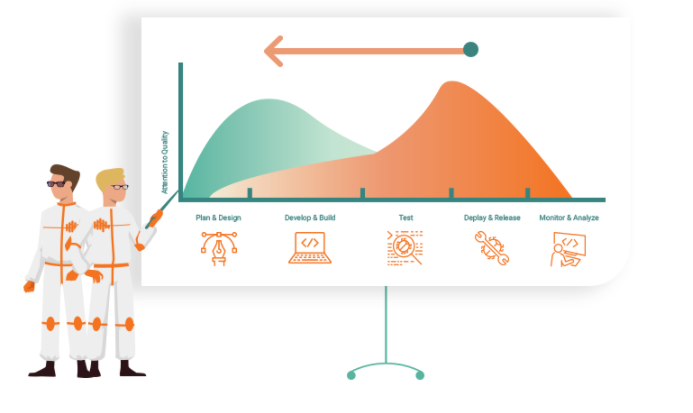Shift left testing has become popular with software teams seeking to streamline quality assurance (QA) and reduce the costs of fixing bugs in post-deployment. In this article, we cover the different types of strategies, the difference between shift left and shift right, as well as how to get started.
What Is Shift Left Testing?
Shift left testing refers to the practice of integrating QA in the early stages of software development. In the standard software deployment lifecycle, the testing phase takes place only after the build has been completed. Depending on the persistence of errors and bugs, this can lead to potential delays and unnecessary hours of rework.
There are four common methods of shift left testing: traditional, incremental, agile, and model-based. Although they share common characteristics, each approach is suited for projects of different scopes and complexities.
Traditional
Teams that utilize traditional shift left integrate QA processes into early development phases, such as unit and integration testing. Traditional shift left is often complemented by QA automation tools to help streamline test data and processes.
Incremental
This model is commonly found in large, complex software engineering projects as it helps break the traditional V model into smaller increments. As a result, incremental shift left testing helps developers verify smaller system components before adding more.

Agile Shift
Agile and DevOps projects rely on cross-functional teams, close communication, and frequent delivery of working code or components. By extension, agile shift left testing includes numerous sprints made up of smaller Vs that are continuous through the development cycle.
Model-Based
With model-based testing, QA teams are included in the initial requirements stages to help identify and resolve issues before development begins. This requires testers to work cross-functionally with design and engineering teams.
What Is Shift Right Testing?
Whereas shift left helps resolve issues before they become inherent, shift right focuses on continuous testing and QA in production and post-launch. In the latter, shift right centers around the experiences of actual end-users and helps developers resolve issues that affect the user experience.
An effective shift right strategy will incorporate multiple feedback and resolution mechanisms. Examples include monitoring different aspects of user behavior and system performance to determine potential problem areas and overall resilience. In addition, shift right can help reveal potential new use cases and improvements for future projects.
Why Shift Left?
Software developers have traditionally relied on quality assurance taking place between the build and deployment phases to resolve any critical issues prior to launch. As such, testers are rarely involved in the planning and requirements phases where they might have been able to prevent those problems from manifesting in the first place.
However, the cost of resolving bugs post-launch is significantly higher than during development. In the worst case, a product launched with system-critical issues may need quick patching and updates, requiring your team to work overtime.
With testing and QA now taking place earlier, teams can deliver functioning pieces of code and working program components quicker. Instead of scrambling to release patches and fixes post-launch, your team can focus on adding new features to the product and value to the end-user.
Benefits of Shifting Left

Less Organizational Silos
Integrating development and QA teams helps prevent siloed knowledge. Without early warning and detection by testers, developers may unknowingly be dedicating time and resources to components that may not make it into the final build. Conversely, involving QA in requirements, planning, and design stages provides testers with better insights into the use case of the final product.
Higher Quality
Code developed using a shift left approach has been thoroughly tested before making it into the build. With QA teams having full knowledge of the final product use case, most components will already have been stress tested with end-user behavior in mind.
Happier End Users
With fewer errors in the final build, developers have more time to add value or take on new projects. Complemented by a post-launch shift-right approach, your team can focus on collecting customers’ feedback, monitoring performance, and conceptualizing new add-ons and features.
Is Shifting Left the Right Response?
Depending on the scope and complexity of your project, a traditional, incremental, agile, or model-based shift left strategy may help increase the quality of your output. Teams that have previously experienced quality control issues in their deliverables may benefit from a shift-left approach to resolve issues earlier in the process. Similarly, shift left can help siloed organizations share knowledge and distribute resources more efficiently.
How to Shift Left
Define Quality Standards and Processes
Implementing a successful shift left strategy requires teams to adopt shared standards for deliverables and feedback. Consistent test data formatting and quality standards allow testers to turn around feedback faster and developers to take appropriate corrective actions.
To help teams adopt to new standards and procedures, project managers may want to run test cases first. As shift left strategies may require some internal reorganization, it is vital that new team members and collaborators become familiar with the new process.
Utilize QA Automation Tools
QA Automation platforms and risk-based testing tools, such as TestBrain, can accelerate your testing practices by giving your QA and development teams real-time feedback. TestBrain also allows your teams to work more efficiently by highlighting which parts of the code require attention.
Shifting Your Approach with Appsurify TestBrain
Most software teams will benefit from including some degree of shift left testing in their development lifecycle. Depending on the project scope and client demands, shift left testing can help teams meet deadlines, reduce costs, and provide higher quality deliverables.
Getting started with shift left testing requires alignment between development and QA teams to ensure consistency throughout the development lifecycle. When leveraging QA Automation platforms, developers and managers can further minimize costs, and manage risk, and increase efficiency. To discover the benefits of shifting left, try TestBrain for free or watch a quick demo to see how it’s done.
